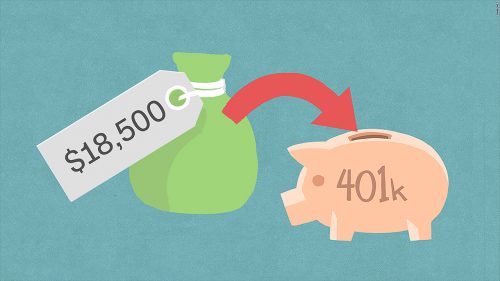 11.3.18 – Mitch Reitman
11.3.18 – Mitch Reitman
The IRS is increasing contribution limits for employees who participate in 401(k), 403(b), most 457 plans and the federal government’s Thrift Savings Plan.
The limits will increase in 2019 to $19,000, the IRS says.
The limit on annual contributions to an IRA, which last increased in 2013, rose from $5,500 to $6,000. The additional catch-up contribution limit for individuals 50 and older remains $1,000.
The income ranges for determining eligibility to make deductible contributions to traditional IRAs, to contribute to Roth IRAs and to claim the saver’s credit all increased for 2019.
If during the year either the taxpayer or their spouse was covered by a retirement plan at work, the deduction for contributions to a traditional IRA may be reduced, or phased out, until it is eliminated, depending on filing status and income. Phase-out ranges for 2019 are:
- For single taxpayers covered by a workplace retirement plan — $64,000 to $74,000, up from $63,000 to $73,000;
- For married couples filing jointly where the spouse making the contribution is covered by a workplace retirement plan — $103,000 to $123,000, up from $101,000 to $121,000.
- For an IRA contributor not covered by a workplace retirement plan and married to someone who is covered, the deduction is phased out if the couple’s income is between $193,000 and $203,000, up from $189,000 and $199,000.
- For a married individual filing a separate return who is covered by a workplace retirement plan, the phase-out range is not subject to an annual cost-of-living adjustment and remains $0 to $10,000.
- The income phase-out range for taxpayers making contributions to a Roth IRA is $122,000 to $137,000 for singles and heads of household, up from $120,000 to $135,000.
- For married couples filing jointly, the income phase-out range is $193,000 to $203,000, up from $189,000 to $199,000.
- The phase-out range for a married individual filing a separate return who makes contributions to a Roth IRA remains $0 to $10,000.
The income limit for the Saver’s Credit (also known as the Retirement Savings Contributions Credit) for low- and moderate-income workers is $64,000 for married couples filing jointly, up from $63,000; $48,000 for heads of household, up from $47,250; and $32,000 for singles and married individuals filing separately, up from $31,500.
Mitch Reitman is Managing Principal of Reitman Consulting Group and is a TBFAA Board Member.
